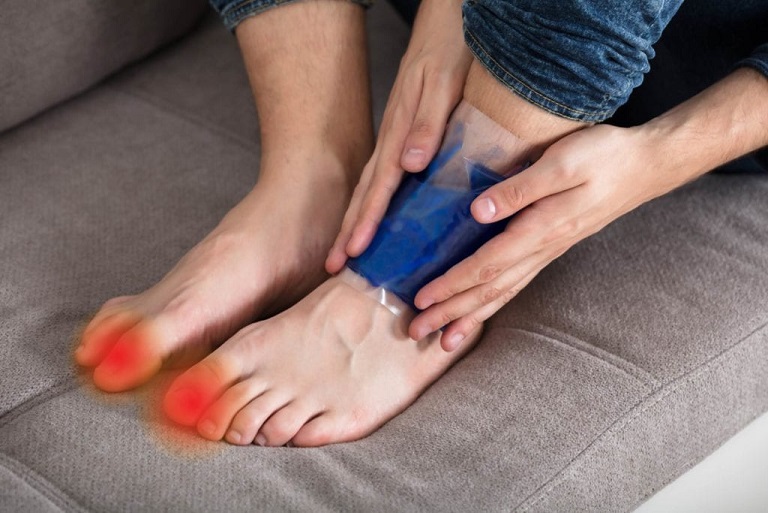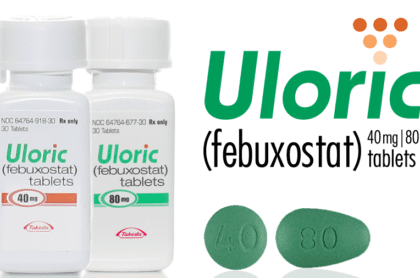Genetic and genetic mutations can certainly play a role in disease, however, poor nutrition and a sedentary lifestyle can greatly increase the risk. Gout is a common condition, but it occurs more frequently in some populations than others. For example, gout occurs in 1 percent of people with Asian ancestry, 3 to 4 percent of people with European ancestry, and 6 to 8 percent of Indigenous (native) Taiwanese peoples and Māori from New Zealand.
In about 15 percent of people with gout, urate accumulates in the kidneys
and forms kidney stones . As the condition worsens, urate crystals can also be deposited under the skin or in other soft tissue, forming a nodule called a tophus (plural: tophi). These tophi often form in the hands, elbows, or feet. Tophi do not typically cause pain, but they can become inflamed, infected, or ooze fluid. Depending on their location, tophi can interfere with movements such as walking or gripping objects.
Tag: gout
Gout and Metabolic Disease: Can Probiotics help?
As we know, many studies have linked Gout with chronic inflammation and obesity. Both conditions contribute a group of factors that increase the risks of heart disease, stroke, and diabetes – also known as metabolic syndrome. Metabolic syndrome is a cluster of biochemical and physiological abnormalities affecting an estimated 50 million Americans.
Continue reading “Gout and Metabolic Disease: Can Probiotics help?”What can you do to alleviate Gout symptoms?
1) Try to get an accurate diagnosis if possible.
HOWEVER, these suggestions are accurate and helpful with any inflammatory attack and can be followed, regardless of a firm diagnosis. Blood testing can be very misleading. Arthrocentesis, or joint aspiration, is the only secure method of evaluating any crystallized deposits in the joints.
2) Take the right anti-inflammatory medications. Continue reading “What can you do to alleviate Gout symptoms?”
Does Gout Go Away?

This is somewhat of a loaded question, overall. If we are speaking of an actual Gout “attack”, then yes, for the most part, it will go away. Most Gout attacks will eventually subside, with or without treatment. The attacks will generally reach its peak 12-24hrs after onset and then slowly begin to resolve, usually with full recovery in one to two weeks. Some Gout sufferers only experience 1-2 attacks per year, and those that are lucky, only 1-2 times in their lifetime. However, Chronic Gout sufferers can experience frequent attacks with very little time in between — with some so unfortunate as to never have a full resolution of inflammation and pain in between attacks. This stage of chronic Gout can cause a great deal of joint destruction and even deformity once tophi (hard uric acid deposits under the skin) has formed. Continue reading “Does Gout Go Away?”
Does Gout Increase The Cardiovascular Disease Risk Factor?
Cardiovascular Disease and Gout

The prevalence of cardiovascular disease continues to rise and is among the leading cause of mortality in the world. Inflammatory conditions such as Rheumatoid Arthritis and Gout are often associated with a higher risk and earlier onset of this disease. Research links gout to an increased risk of several types of cardiovascular disease, including heart attack, heart failure, and atrial fibrillation, or an irregular heartbeat. Epidemiological, experimental, and clinical data show that patients with hyperuricemia SUA are at increased risk of cardiac, renal, and vascular damage and CV events. Continue reading “Does Gout Increase The Cardiovascular Disease Risk Factor?”
Higher levels of omega-3 acids in the blood increases life expectancy by almost five years
A 1% increase in this substance in the blood is associated with a change in mortality risk similar to that of quitting smoking.
Date:July 22, 2021Source: IMIM (Hospital del Mar Medical Research Institute)
Summary: Researchers have found that omega-3 levels in blood erythrocytes are very good mortality risk predictors. The study used data from a long-term study group, the Framingham Offspring Cohort, which has been monitoring residents of this Massachusetts town, in the United States, since 1971 and concludes that, ‘Having higher levels of these acids in the blood, as a result of regularly including oily fish in the diet, increases life expectancy by almost five years.’
Continue reading “Higher levels of omega-3 acids in the blood increases life expectancy by almost five years”FDA Adds Boxed Warning for Increased Risk of Death with Gout Medicine Uloric (febuxostat)
Uloric (Febuxostat) was FDA approved in 2009 as a means to treat Gout, a form of arthritis. The FDA has since concluded that there is an increased risk of heart-related death and death from all causes from Uloric and now requiring a boxed label warning.
The makers of Uloric (Febuxostat) are also recommending that health care professionals reserve prescribing it only to patients that have failed to achieve relief from Allopurinol or those that were unable to tolerate Allopurinol.
The makers of Uloric, Takeda Pharmaceuticals, were forced to include a “precaution” about possible cardiovascular events in patients at the time of release but has since been updated to the most prominent warning, a boxed warning. Sadly, Takeda Pharmaceuticals was able to manufacture and sell Uloric in the US without any complication warning on the drug’s label for years.
A safety trial was conducted to compare the risks posed by both Allopurinol and Uloric. 15 deaths from heart-related causes per 1,000 patients taking Uloric was observed over a year’s time compared to 11 deaths from heart-related causes per 1,000 treated with Allopurinol. Additionally, 26 deaths from any cause, per 1,000 patients, was observed with Uloric use over that year compared to 22 deaths per 1,000 from Allopurinol. This trial, known as the CARE trial, suggested that Uloric was connected to significantly higher risk for fatal cardiovascular events like heart attacks, strokes, and unstable anginas.
The FDA has been fully aware of these potential complications as early as 2009 and even attempted to minimize the heart problems that Uloric could cause by only approving 40mg and 80mg doses as opposed to the 80mg and 120mg doses that Takeda Pharmaceuticals had requested. Sadly, it took until 2018 for the FDA to require the box label warning based on the results of the postmarket trial that was conducted (CARES).
Uloric (Febuxostat) has also been linked to abnormal liver function. People taking Uloric were shown to have three times higher than normal levels of transaminase. While it remains unlcear as to whether Uloric directly heightens those levels, physicians who prescribe Uloric are supposed to conduct a baseline liver test panel prior to starting Uloric and then continue to monitor for any changes.
Uloric (Febuxostat) has also been linked to severe and potentially fatal allergic reactions. Stevens-Johnson syndrome being one of these observations. Approximately one in 10 people who develop this syndrome fall victim and die from the disease.
The deceptive and faulty marketing that has allowed for years of uninformed use regarding the risk of cardiovascular events has led to numerous lawsuits against Takeda Pharmaceuticals.
Learn More Uloric (Febuxostat)
Is it OK to walk with gout?
Medical News Today: It is safe for people to walk with gout. In fact, doing joint friendly activities such as walking can help improve gout-related pain.
Gout is a form of arthritis that usually affects the big toe joint, but it can also affect the lesser toes, ankles, and knees. It normally affects one joint at a time.
People with gout may find it difficult to carry out physical activity, or they may be worried that physical activity will make their gout worse.
This article will examine whether or not it is safe to walk with gout. It will also cover how to manage, treat, and prevent this condition.
Continue reading “Is it OK to walk with gout?”Hyperuricemia as a potential plausible risk factor for periodontitis
Abstract
Author: Zi-yun Chen,Lu-wen Ye,Li Zhao,Zhao-jia Liang,Ting Yu,Jie Gao
Publication: Medical Hypotheses
Publisher: Elsevier
Date: April 2020
Elevated blood uric acid (UA) levels have been positively associated with the severity of periodontitis. It thus brings out a hypothesis that hyperuricemia, a pathological elevation of blood UA, might be a risk factor for periodontitis. Namely, periodontitis individuals with Hu might acquire more severe periodontal destruction compared to those without Hu. To support the hypothesis, four aspects of evidences are proposed.
Continue reading “Hyperuricemia as a potential plausible risk factor for periodontitis”In-hospital cardiac procedures up for those with gout, rheumatoid arthritis
(HealthDay)—Rates of in-hospital cardiac procedures continued to increase in people with gout and rheumatoid arthritis (RA) from 1998 to 2014, although they decreased for the general population, according to a study published online Feb. 25 in Therapeutic Advances in Musculoskeletal Disease.Jasvinder A. Singh, M.B.B.S., M.P.H., and John Cleveland, M.D., both from the University of Alabama at Birmingham, used data from the U.S. National Inpatient Sample (1998 to 2014) to examine the frequency of seven common cardiac and orthopedic procedures in hospitalized people with gout and RA compared to the general population.
Continue reading “In-hospital cardiac procedures up for those with gout, rheumatoid arthritis”






